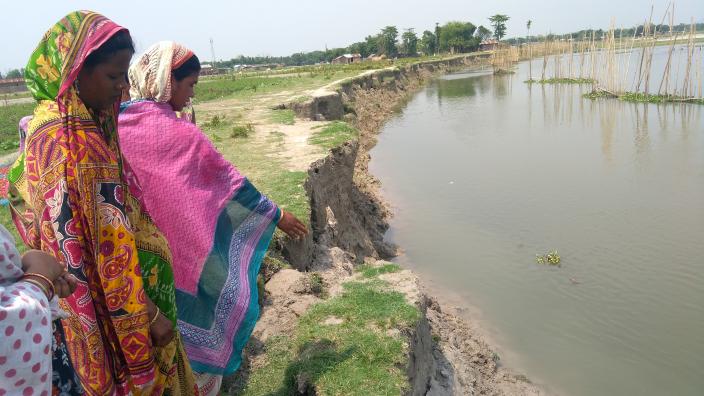Disaster risk governance is key to effective planning, financing, implementation, and monitoring of progress towards resilience. While local context matters, there is growing evidence on the transboundary and regional context of disaster and climate risks. For example, the 2017 South Asian floods affected more than 41 million people in Nepal, India, and Bangladesh, and the total economic loss was more than USD $3.5 billion. This year’s monsoon floods affected more than 17.5 million people across these countries. These floods in July and August were a devastating blow to communities, businesses, and governments in India and Bangladesh who were hard hit by Cyclone Amphan in May. Climate change impacts are expected to further intensify many such natural hazards in the region and more so in shared natural ecosystems such as in transboundary rivers, mountains, deltas, and along the coasts. For example, in a recent inventory of glacial lakes in the transboundary river basins of Koshi, Karnali, and Gandaki, 47 potentially dangerous glacial lakes (PDGLs) were identified. Disaster risk governance of these PDGLs, and any Glacial Lake Outburst Flood (GLOF), will require cooperation among the basin states and stakeholders, including the riverine communities living in these basins and who are at risk of these PDGLs and GLOFs.
Such scientific assessments and other disaster risk patterns in the region highlight the urgency for a comprehensive regional risk governance framework. Governments in the region have already committed to improving cooperation and collaboration to meet the targets under the Sendai Framework for Disaster Risk Reduction (SFDRR, 2015-2030). In the last Asian Ministerial Conference on Disaster Risk Reduction (AMCDRR 2018), governments reaffirmed their commitment through the Ulaanbaatar Declaration to further strengthen sub-regional and regional platforms on disaster risk reduction. These political commitments need to be followed up by strategic disaster risk governance mechanisms that are inclusive, integrated, and innovative.
The Covid 19 SAARC Emergency Fund, which was established by the region’s heads of states in March this year reflects the level of preparedness and commitment among the political leadership. Existing sub-regional initiatives like the Bay of Bengal Initiative for Multi-Sectoral and Economic Cooperation (BIMSTEC), the South Asia Subregional Economic Cooperation (SASEC), and the Bangladesh, Bhutan, India, and Nepal (BBIN) initiative are also effective entry points to foster sub-regional disaster risk governance through mainstreaming climate and climate risk reduction and resilience building elements into regional trade, investments, and other infrastructure development projects. BIMSTEC has the environment and disaster management as a priority area of cooperation, and as part of this, it facilitates annual disaster management exercises and joint research among member countries.
Disaster risk governance is much broader than disaster management and requires deeper investigation of underlying risk drivers in a given context, including at sub-regional and regional levels, and promoting more collaborative actions on risk governance. Cross-sector partnership and multi-stakeholder engagement are key to establish, promote, and sustain such collaborations at the sub-regional and regional levels. For example, the newly established Coalition for Disaster Resilient Infrastructure (CDRI) is an emerging opportunity for such partnerships and cooperation to catalyze regional cooperation on disaster risk governance. The private sector and businesses are important stakeholders in many of these sub-regional and regional initiatives, and they play a critical role in disaster risk governance by ensuring the finance and investments, infrastructure development, technology, and innovation are disaster-risk-informed. The Private Sector Alliance for Disaster Resilient Societies (ARISE) is a private sector initiative promoting risk-informed investments and development.
Civil society engagement in disaster risk governance initiative will help establish and promote a more whole-of-society approach in these regional efforts by facilitating meaningful participation of the marginalized and vulnerable population and building more women and youth leadership. As more and more young people are actively engaged in climate action through campaigns, research, and advocacy in different countries, there is an opportunity to work with and support these young minds on disaster and climate risks from a sub-regional or regional perspective. Such regional youth-led initiatives could be promoted through the recently established South Asian Regional Centre of Global Centre on Adaptation (GCA) at Dhaka.
While these existing initiatives and new institutions provide the much-required framework for regional and sub-regional cooperation on disaster risk governance in South Asia, it is also critical to ensure the framework is inclusive and leaves no one behind.
Jyotiraj Patra is Project Manager – Transboundary Rivers of South Asia. Views expressed are personal
